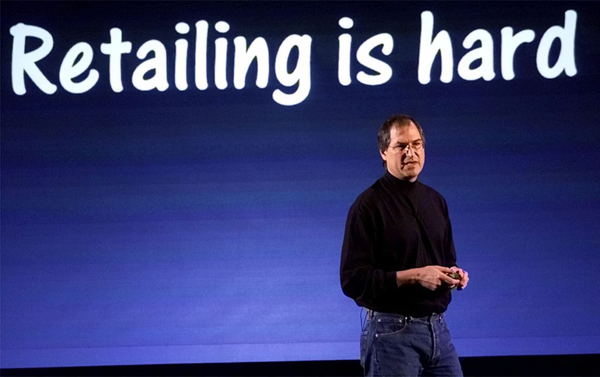The Online Retail World Goes Offline

Ever since the early beginnings of ecommerce, there has been a consistent thread running throughout the entire course of its development: the dramatic evolution of the business model. Before the advent of the Internet, businesses could set up shop in a particularly favorable place, stock appealing products at fair retail prices and reasonably expect to have their sales grow. As market competition grew, so did the tactics employed by businesses, but they still fell generally within this tried-and-true model.
Location is No Longer Everything
With the development of ecommerce, all of this would change in the blink of an eye, and a new trend began taking the retail world by storm. The major elements that had made old business models successful were removed one by one, as exact location no longer mattered, a large inventory became a liability instead of an asset, and price comparison tools were embraced by customers on the hunt for the best deal, regardless of brand. The results were fairly easily predicted: large companies that made a name for themselves by capitalizing on their widespread locations and huge inventories suddenly found themselves without a leg to stand on, and began closing their doors just to stay afloat. Whether their competitor tracking had failed them or they simply didn't believe that online shopping was more than a fad isn't clear, but hundreds of these companies suddenly couldn't compete in a world that had passed them by.
Online Retailers Flourish
For a while, it looked like this trend would become the new norm, as digital upstarts like Amazon.com became the retail titans we know today, easily trumping the suddenly outmoded businesses they replaced thanks to low overhead, huge product catalogs and price monitoring systems. Brick-and-mortar stores were closing left and right, and online sales growth surged as customers embraced change with open wallets. Rather than seeing the typical single-digit sales growth patterns that retailers had come to expect year in and year out, online retailers regularly posted double-digit sales increases quarter after quarter, year after year.
This massive influx of capital enabled many digital retailers to expand dramatically, improving inventories and quality of service, but it has now begun to spark yet another evolution of the successful business model, as the online world begins to go offline.
Apple (Once Again) Changes the Game
Arguably started back in 2001 with the launch of the Apple Store, there was a quiet period as retailers waited to see how successfully a primarily online/manufacturer-based business would translate into the brick and mortar retail world. (Steve Jobs pictured below announcing the opening of Apple's first retail store. Image source.)

Still a rousing success after many years, other retailers have finally begun to follow suit. Amazon has been quietly developing a pilot project dubbed 'Pantry', which will be its first foray into the brick-and-mortar world, and even the quirky arts & crafts website Etsy is developing plans to start a distributed network of sales staff in major stores, offering any creative individual truly massive offline reach.
This trend isn't unique to North America, as China-based Amazon competitor Alibaba is developing a relationship with a major chain of department stores all throughout China to expand its offline reach. It remains to be seen whether or not these offline expansions will be successful, but if they can capitalize on the online advantages that made them a success in the first place, we may be watching the next generation of brick-and-mortar retail leaders emerging.
About the author
James Wright is the marketing director for Intelligent Eye, a leading provider of online business intelligence solutions such as Competitor Monitor (https://www.competitormonitor.com).







